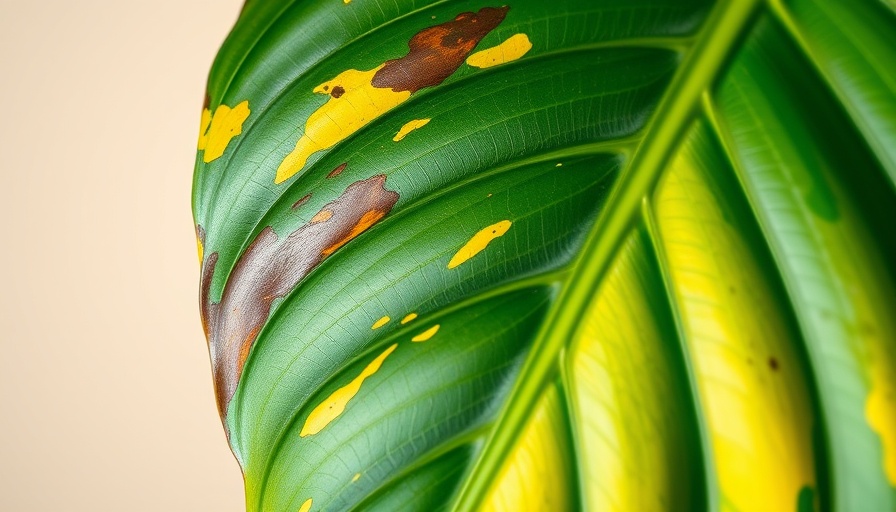
Understanding Your Monstera: A Beloved Houseplant
Monsteras, or Monstera deliciosa, are the stars of many homes, especially in Southeast Michigan. Their glossy, heart-shaped leaves and unique fenestrations (those charming splits in the leaves) make them a go-to choice among plant enthusiasts. But even the hardiest houseplant needs a little TLC. If you’ve ever wondered if your monstera might be feeling under the weather, you’re not alone.
Signs Your Monstera Is Sick and How to Identify Them
As you spend time nurturing your monstera, it’s crucial to recognize the signs it may not be thriving as well as it should. If you notice yellowing or drooping leaves, these indicators signal that your plant is asking for help. Megan Brame, a plant expert, explains, “Yellow leaves often lead to brown, crispy edges.” Constant vigilance is essential; Gail Pabst from the National Garden Bureau echoes this sentiment, advising plant owners to look closely and frequently at their plants.
Additionally, leaf curling can indicate that your monstera is in distress. This issue, alongside a lack of new leaf growth or fenestrations, might suggest your plant isn't getting the right care. Remember, a healthy monstera will sometimes drop older leaves naturally, but if you see consistent yellowing from the tips as they age, it might be time for a change. Your plant may also appear leggy if it’s not receiving enough light, which is a common issue in homes lacking bright spots.
Common Misconceptions About Monstera Health
Many plant parents mistakenly equate non-fenestrating leaves with a sick plant. Megan emphasizes that new leaves may not split immediately; these fenestrations develop only when your monstera is settled in and content. Consequently, if your plant hasn’t started developing splits yet, don’t fret. It’s more about ensuring the plant is in a suitable environment than diagnosing illness.
Simple Tips to Improve Your Monstera's Health
To ensure your monstera stays vibrant and healthy, consider the following simple care tips:
- **Light conditions:** Assess your plant's location. Monsteras thrive in bright indirect light. If yours is leggy, try moving it to a sunnier spot.
- **Watering wisely:** Monsteras like to dry out between waterings. Overwatering can prompt root rot, while underwatering can lead to droopy leaves. Maintain a balance, and check the soil moisture regularly.
- **Humidity is key:** Being tropical plants, monsteras love humidity. Make sure your indoor environment mimics their natural habitats by regularly misting them or using a humidifier.
Final Thoughts on Caring for Your Monstera
Homeowners in Southeast Michigan can enjoy the lush beauty a monstera brings with the right care and attention. Understanding the signs of sickness, debunking common myths, and implementing easy tips can ensure your plant remains a cherished part of your home for years to come. It’s essential to keep an eye on your plant and respond to its needs to foster a happy, thriving monstera.
So next time you're wondering about the health of your monstera, take a closer look. With a few adjustments and your attention, you can give your plant the best chance at a long, fruitful life. Remember, a thriving garden rewards you with a lively, green space that feels like home.
 Add Row
Add Row  Add
Add 




 Add Row
Add Row  Add
Add 

Write A Comment